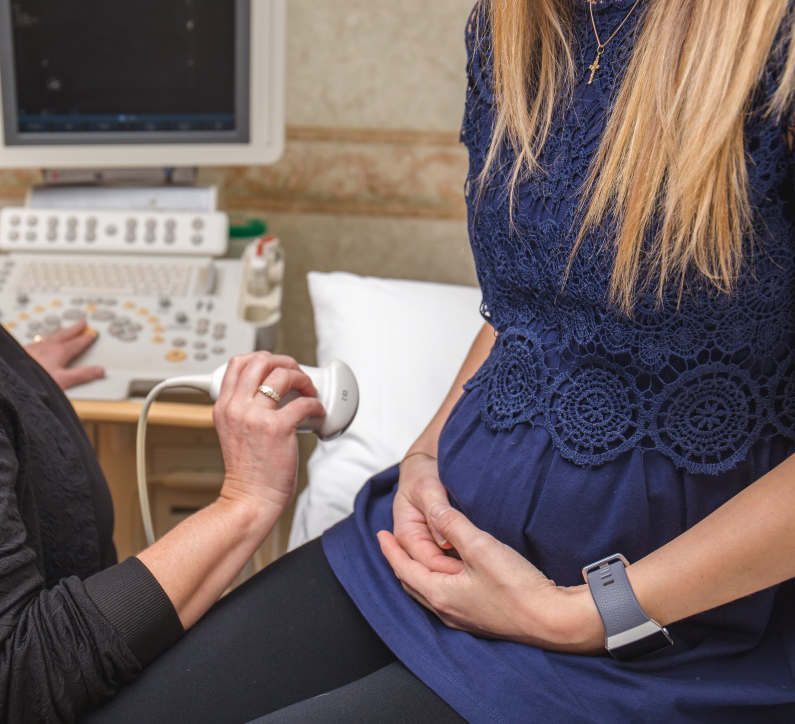ULTRASOUND

Ultrasound
Ultrasound imaging or sonography is a safe exam that uses high-frequency sound waves to create real-time images of the body. It is most commonly known for its use during pregnancy.
Ultrasound imaging works by sending sound waves into the body. These waves are able to pass through softer tissue but are reflected by more dense tissue and bone. These reflected or echoed sound waves are used to create a live image of what is going on inside the body that includes details such as movement and even a fetal heartbeat.

Who are ultrasounds for?
Ultrasound imaging has many uses, from monitoring pregnancy to examining organs, and soft tissue. It is an invaluable tool in the diagnosis and treatment of circulatory issues, organ issues, obstetrics and more.
How do I prepare for an ultrasound?
Unlike an X-ray, ultrasound imaging can require preparation based on the area of the body that is being scanned. See the requirement for your scan below:
Abdominal Ultrasound (gallbladder, pancreas, liver, spleen)
- Don’t eat after midnight.
- A light breakfast is allowed before afternoon appointments. This can include dry toast, black coffee, tea, or clear broth.
- Do not eat or drink any dairy product, fats, cream or oils before your ultrasound.
- Water may be taken with your regular medication.
Renal Ultrasound (kidneys)
- Don’t eat for at least 4 hours before your ultrasound. This applies to both morning and afternoon appointments.
- Drink 24 ounces of water an hour before the appointment. Do not urinate.
Female Pelvis Ultrasound
- Drink 32 to 48 ounces of water in the 30-60 minutes prior to your exam and do not urinate. You must have a full bladder or the test cannot be performed.
- You may eat any foods – they will not affect your testing.
Male Pelvis Ultrasound
- Drink 32 ounces of water an hour before your ultrasound. and do not urinate. Your bladder must be full for the exam.
- A light meal may be eaten.
Pregnancy Ultrasound (1st and 2nd trimester)
- Drink 32 to 48 ounces of water and do not urinate. You must have a full bladder for accurate results.
What is an ultrasound like?
During an ultrasound, a technologist will use lubricating gel on the area to be scanned; she will then place a handheld transducer over the gel and move as needed to produce a clear image on the nearby display. It is an extremely simple and pain-free process. An internal ultrasound requires placing the transducer in the vagina.
Is there a weight limit?
Weight Limit for Ultrasound: 400 lbs
